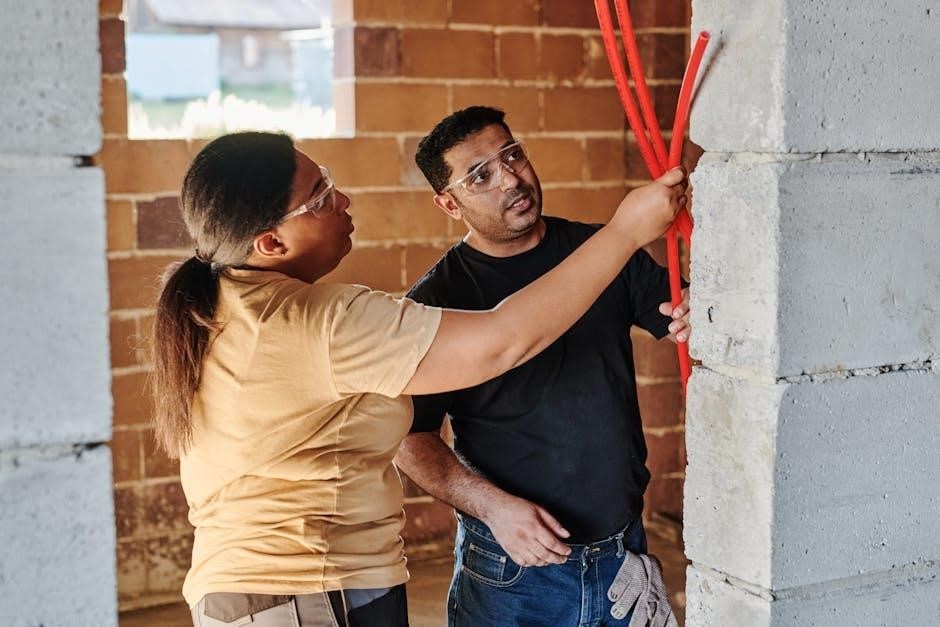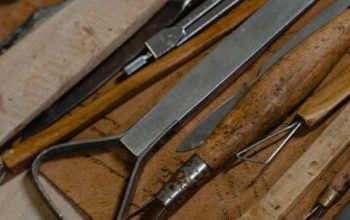Overview of Howard Miller Clocks and Their Instruction Manuals
Howard Miller is a renowned brand specializing in high-quality clocks since 1926․ Their instruction manuals provide detailed guidance for setup, functionality, and maintenance, ensuring optimal performance and longevity․
1․1 Historical Background of Howard Miller Clocks
Howard Miller, founded in 1926 by Howard Miller, is a distinguished name in horology, crafting exquisite timepieces like grandfather clocks, wall clocks, and mantel clocks․ Renowned for precision and artistry, their designs blend traditional craftsmanship with modern innovations․ The company’s legacy endures, offering reliable products that combine functionality and style․ Their instruction manuals, detailed and user-friendly, ensure proper setup and maintenance, reflecting their commitment to customer satisfaction and product longevity․
1․2 Importance of Instruction Manuals for Proper Clock Functionality
Instruction manuals are essential for ensuring the proper functionality and longevity of Howard Miller clocks․ They provide clear, step-by-step guidance for assembly, installation, and maintenance, helping users avoid common mistakes that could damage the clock․ The manuals detail critical processes like unpacking, pendulum regulation, and time synchronization, ensuring accurate timekeeping and smooth operation․ Additionally, they offer troubleshooting tips and maintenance recommendations, such as cleaning and lubrication, to preserve the clock’s performance and aesthetic appeal․ By following the manual, users can maximize their clock’s functionality and enjoy its precision and beauty for years to come․

Contents of a Typical Howard Miller Instruction Manual
A typical Howard Miller manual includes safety precautions, tools required, step-by-step assembly, installation guides, and maintenance tips, ensuring proper setup and functionality of the clock․
2․1 Safety Precautions and Tools Required
Always read the manual before starting․ Wear gloves to protect from sharp edges․ Ensure the clock is unpacked carefully, as components may be fragile․ Use tools like scissors, screwdrivers, or Allen wrenches for assembly․ Avoid touching electrical parts to prevent damage․ Secure the clock to a stable surface to prevent tipping․ Keep children away during setup․ Use clamps or stands to hold heavy parts in place․ Follow all warnings and cautions provided in the manual to ensure safe and proper assembly․ Proper preparation and adherence to safety guidelines are essential for a successful installation․
2․2 Step-by-Step Assembly and Installation Guide
Begin by carefully unpacking all components, ensuring no damage․ Use the provided tools, such as screwdrivers or Allen wrenches, to assemble the clock․ Attach the pendulum and weights securely, following the manual’s diagrams․ Place the clock on a level surface to ensure proper balance․ For wall clocks, locate wall studs and use anchors for stability․ Hang the clock straight, adjusting as needed․ Test the movement by gently swinging the pendulum․ Ensure all chimes or alarms are functional․ Follow the manual’s sequence to avoid misalignment․ Double-check all connections before finalizing the installation․ Proper assembly ensures smooth operation and longevity of your Howard Miller clock․

Setting Up Your Howard Miller Clock
Unpack and inspect the clock for damage․ Place it on a level surface, ensuring stability․ Hang the pendulum correctly and follow the manual for precise setup instructions․
3․1 Unpacking and Initial Inspection
When unpacking your Howard Miller clock, carefully remove all packaging materials, including foam, styrofoam, metal brackets, and cardboard․ Inspect for visible damage or defects․ Gently cut rubber bands securing the movement and chimes, taking care not to scratch surfaces․ Ensure all components, such as pendulum, weights, and hardware, are included․ Check for any loose parts or misalignment․ If damage is found, contact customer support immediately․ Proper inspection ensures a smooth setup process and prevents potential issues during operation․
3․2 Placing the Clock in the Correct Location
Place your Howard Miller clock on a stable, level surface to ensure proper operation․ Avoid direct sunlight to prevent discoloration and overheating․ For radio-controlled models, choose a location with optimal signal reception․ Keep the clock away from heating vents or drafty areas to maintain consistent time accuracy․ Ensure the pendulum guide is secure and unobstructed․ For wall clocks, select a sturdy wall anchor to support the weight․ Proper placement enhances performance and longevity, ensuring your clock remains a reliable and elegant timepiece for years to come․

Adjusting Time and Settings
Howard Miller clocks allow precise time synchronization and setting adjustments․ Use the time signal for radio-controlled models, and regulate the pendulum for accurate timekeeping and optimal performance․
4․1 Synchronizing the Time Accurately
Synchronizing your Howard Miller clock ensures precise timekeeping․ For radio-controlled models, the clock automatically interprets the WWVB time signal, adjusting to the correct local time without manual input; This feature eliminates the need for frequent adjustments, providing reliable accuracy․ Simply ensure the clock is in an area with a strong signal reception․ For non-radio-controlled models, refer to the manual for step-by-step instructions on setting the time using the adjustment lever or knobs․ Regular synchronization helps maintain consistency and prevents time deviations, ensuring your clock remains accurate and dependable over time․
4;2 Regulating the Pendulum for Optimal Performance
Proper pendulum regulation is crucial for accurate timekeeping․ Ensure the pendulum hangs correctly in its guide․ To adjust, gently move the pendulum bob up or down․ Raising the bob speeds up the clock, while lowering it slows it down․ Avoid extreme adjustments, as this can affect performance․ After each adjustment, allow the clock to run for 24 hours to stabilize․ Regular checks ensure consistent accuracy․ For precise regulation, refer to the manual’s guidance on fine-tuning the pendulum․ Proper maintenance ensures your Howard Miller clock remains a reliable timekeeper, blending tradition with precision engineering․
Maintenance and Troubleshooting
Regular cleaning and lubrication ensure smooth operation․ For troubleshooting, inspect the pendulum alignment and ensure all components are securely fastened․ Refer to the manual for specific solutions․
5․1 Cleaning and Lubrication Recommendations
Regular cleaning is essential to maintain your Howard Miller clock’s performance․ Use a soft, dry cloth to wipe down the clock’s exterior and avoid harsh chemicals․ For intricate carvings, a slightly damp cloth may be used, but ensure no moisture enters the mechanism․ Lubrication should only be applied to moving parts as specified in the manual, typically every 2-3 years․ Over-lubrication can damage the clock․ Pay special attention to the pendulum and weights, ensuring they are free from dust and properly aligned for smooth operation․ Follow these steps to preserve the clock’s longevity and ensure accurate timekeeping․
5․2 Common Issues and Their Solutions
Common issues with Howard Miller clocks include inaccurate timekeeping, pendulum malfunctions, or chiming irregularities․ For time inaccuracies, ensure the clock is properly synchronized with the time signal; If the pendulum stops swinging, check for proper alignment and remove any obstructions․ For chiming issues, verify that the chime selector is correctly set․ Mechanical noises may indicate the need for lubrication or adjustment of moving parts․ Consult the manual for specific troubleshooting steps, and avoid tampering with internal mechanisms․ If problems persist, contact Howard Miller’s customer support for professional assistance to maintain your clock’s optimal performance and extend its lifespan․

Warranty and Customer Support Information
Howard Miller offers a limited 2-year warranty on floor clocks, covering defects in materials and workmanship․ Contact their customer support team for inquiries or assistance․
6․1 Understanding the Warranty Coverage
Howard Miller offers a limited 2-year warranty on most of its products, ensuring coverage for defects in materials and workmanship․ This warranty applies to the original purchaser and is non-transferable․ It typically covers repair or replacement of defective parts, provided the clock has been used under normal conditions․ However, the warranty does not extend to damage caused by misuse, improper maintenance, or external factors like accidents or environmental conditions․ To make a claim, customers must provide proof of purchase and contact Howard Miller’s customer service team for authorization․ The warranty underscores the brand’s commitment to quality and customer satisfaction․
6․2 Contacting Howard Miller Customer Service
To contact Howard Miller’s customer service, visit their official website at www․howardmiller․com for detailed support options․ You can reach them via phone, email, or mail for inquiries, troubleshooting, or warranty claims․ Their team is available to assist with product-related questions, repair services, and maintenance guidance․ For warranty-related issues, ensure you have your product serial number and proof of purchase ready․ Howard Miller’s customer service is committed to providing timely and effective support to ensure customer satisfaction and uphold the brand’s reputation for quality and reliability․



